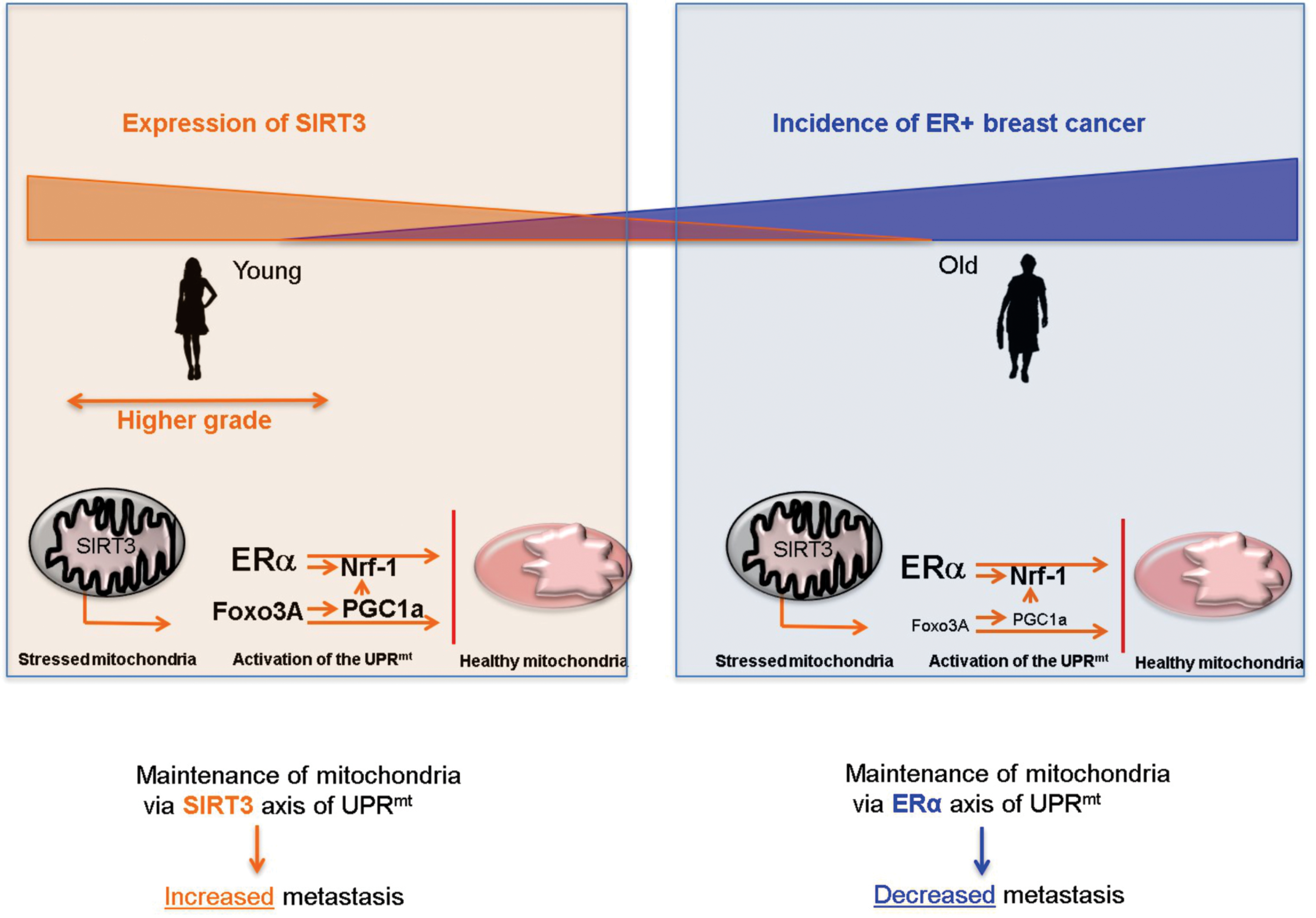Figure 3.

Hypothetical model of how young women (orange box) with high level of SIRT3 may maintain mitochondrial fitness through the SIRT3 axis of the UPRmt, and develop more aggressive tumors, while older women (blue box) rely on the ERα axis of the UPRmt and therefore develop mainly luminal and less aggressive breast cancers.
